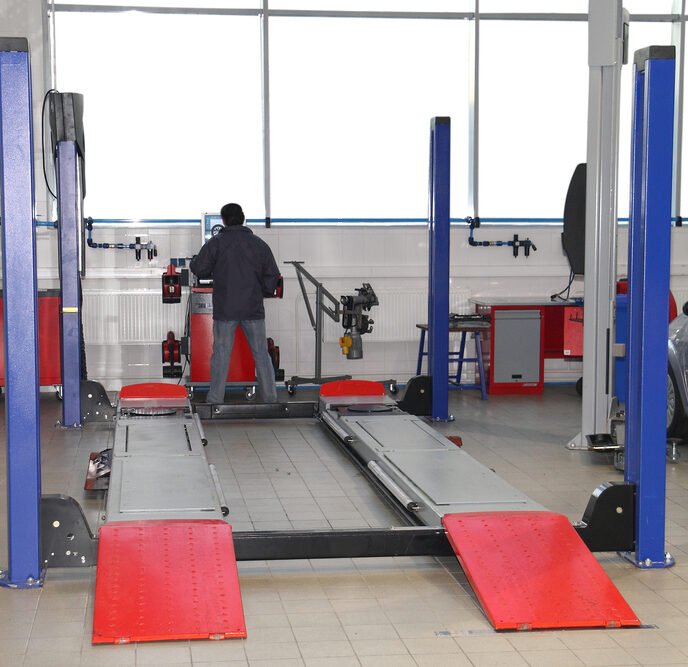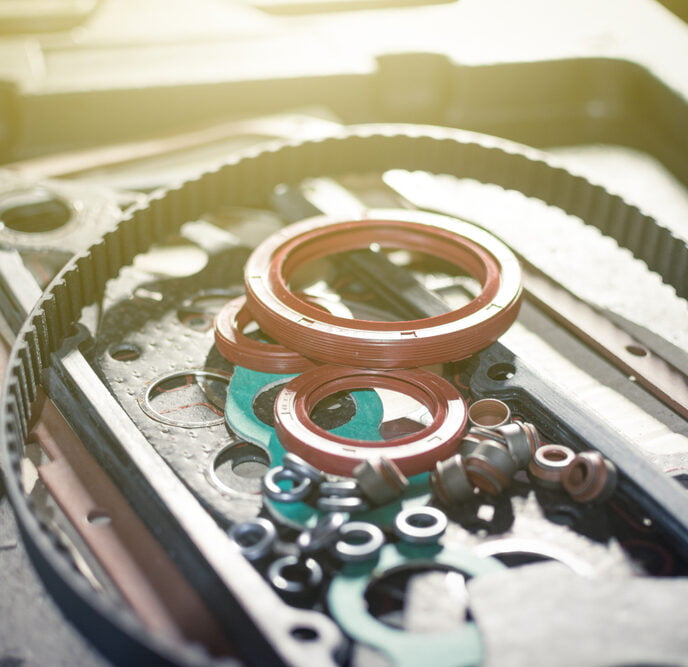How to Lift a Motorcycle for Maintenance

If you want a motorcycle to look and run its best and retain its value, you must take great care of it. While motorcycles require more frequent repair and maintenance than vehicles, the care is far less intimidating due to the motorcycle’s small size.
If you plan to perform maintenance work on a motorcycle, you’ll want a motorcycle lift or jack. It increases work safety by keeping the bike off the ground, allowing you to maneuver around the bike, and preventing you from lying on the floor.
Whether you’re a mechanic or a home motorcycle enthusiast, it’s crucial to understand how to lift a motorcycle for maintenance.
How to Safely Lift Your Motorcycle
According to some estimates, the “typical” motorcycle weighs roughly 700 pounds, but this varies depending on the brand, engine size, and style.
While motorcycles are smaller and lighter than cars, a slight misstep with a motorcycle lift can cause significant injuries to you and the bike.
It’s best to follow the steps below for how to lift a motorcycle for maintenance safely:
Prepare the Area
Ensure that the area where you are using the lift is flat. Not only that, but it’s essential to use a motorcycle lift on concrete, not carpet. If you use a lift on a carpeted floor, the lift can slip, causing the bike to fall. A fallen bike can cause severe injuries to you and the bike.
In addition, keep the space surrounding the lift clutter-free to avoid any issues with your bike as it rises or falls. If you have a limited amount of room, the last thing you want is for an overloaded workbench to catch a handlebar and tip your lift over.
Check for the Best Lift Spots
Consult your bike’s manual to locate the best and most supporting spots for lifting.
If you have a cruiser, you will benefit from frame rails. Frame rails will greatly simplify raising it with a jack and mounting it on jack stands.
In addition, look for your frame sliders if you have a sports bike.
Prepare the Bike
To prepare the bike for lifting, use the center stand. A center stand will assist you with positioning your bike so the lifting process is safe and easy.
If you only have a side stand, place it on top of a spare wood block or something similar before placing it down.
The jack should be as straight and upright as possible underneath your bike.
Although some motorcycle lift tables include built-in rubber padding, many do not. Use a buffer against any areas that touch your bike to prevent scratches and paint damage. Use clean rags to protect the wheel mounts. In addition, it’s important to double-check that your tie-downs aren’t scratching against the bike’s body.
Start the Lift
Lift the bike carefully and evenly, and don’t be afraid to lower it and start over again if it’s not perfect the first time.
If your table doesn’t have built-in wheel clamps, you can install a wheel chock.
Place the Jack Stands
Before working on your bike, set up the jack stands. These are typically included with the lift or may be purchased separately.
Follow the instructions for your motorcycle’s jack stands to place them correctly.
Perform Maintenance
Congrats! You’ve used a jack to lift your bike off the ground, and it’s now ready for repairs or route maintenance.
How to Lift a Motorcycle Without a Lift
Without a motorcycle lift, you might easily harm the bike or yourself.
However, here are some options for lifting a motorcycle without a motorcycle lift:
Make Your Own Lift
If you don’t already have a manufactured lift, you can make a DIY lift with plenty of online do-it-yourself guides. The guides provide a list of materials to purchase at any construction supply store.
Use a Car Jack
If you don’t have a lift specifically for motorcycles, you can use a car jack.
Place a wooden block under your bike’s kickstand and place the car jack on the opposite side. Move the side stand forward to guarantee that the front wheel is well elevated off the ground.
When using a car jack, you need to be careful to lift from the frame (specifically the skid plate) and keep the kickstand down.
Remember to never lift the bike with the jack under the exhaust system. The exhaust system is not designed to withstand the weight and may be crushed or damaged.
Use Wooden Boards
In a pinch, you can use wooden boards to prop up one side of your motorcycle at a time. Lifting your bike on a stack of wooden boards is a tried and true method for lifting one side of your bike at a time.
The process is even more straightforward with two individuals; one lifts the bike’s rear end while the other slides the boards underneath.
After you’ve installed the boards, you should consider strapping the front end of your bike to keep it from tipping over.
Benefits of a Motorcycle Lift
When doing maintenance, safety should always come first. Motorcycle lift tables are extremely stable and safe because they are able to lift the entire motorcycle at once, rather than just the front of the back. While using a car jack is a possible secondary solution, it’s not nearly as easy or safe as a motorcycle lift.
With a motorcycle lift, the motorcycle remains upright, resting on the frame rather than the kickstand. Steel lifts are usually powered by air or hydraulic cylinders, allowing loads of up to 1500 pounds.
In short, motorcycle lifts are simple to use, inexpensive to own and take up little to no extra room, especially if you consider using them for bike storage.Should you have any questions about the type of lift you need for your bike, please contact us. We would love to work with you to find the best motorcycle jack for your purposes.


